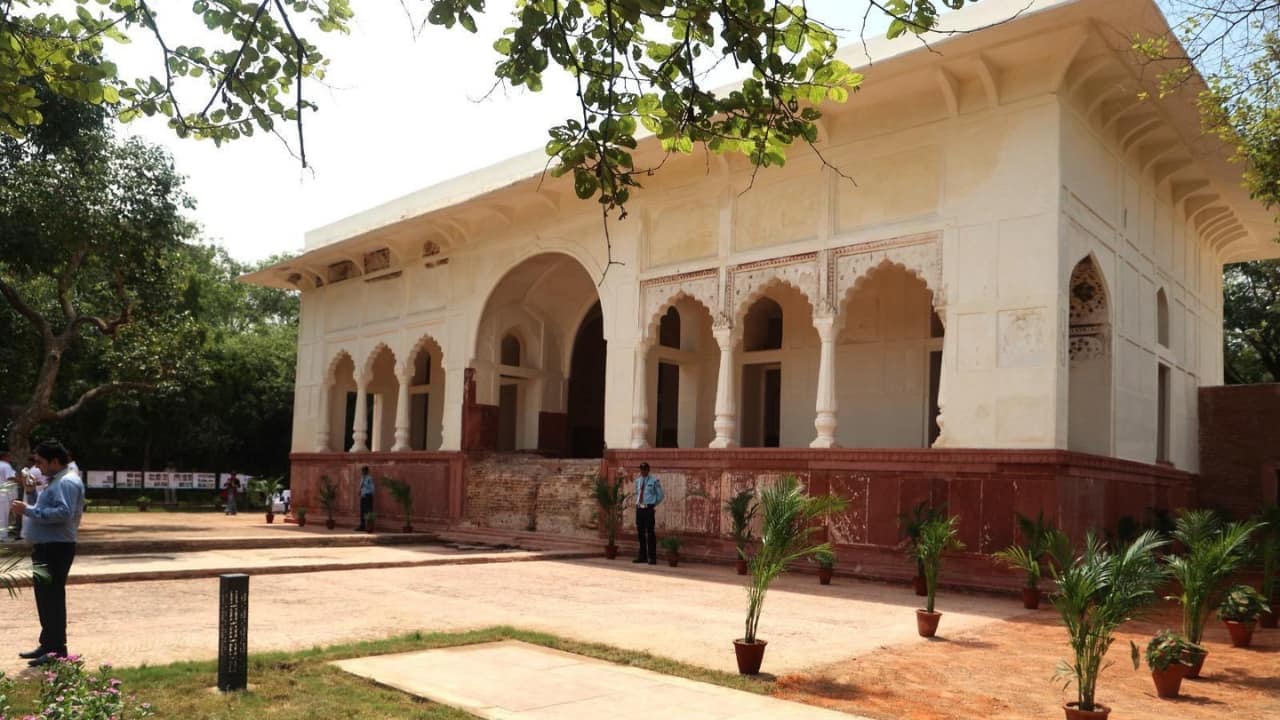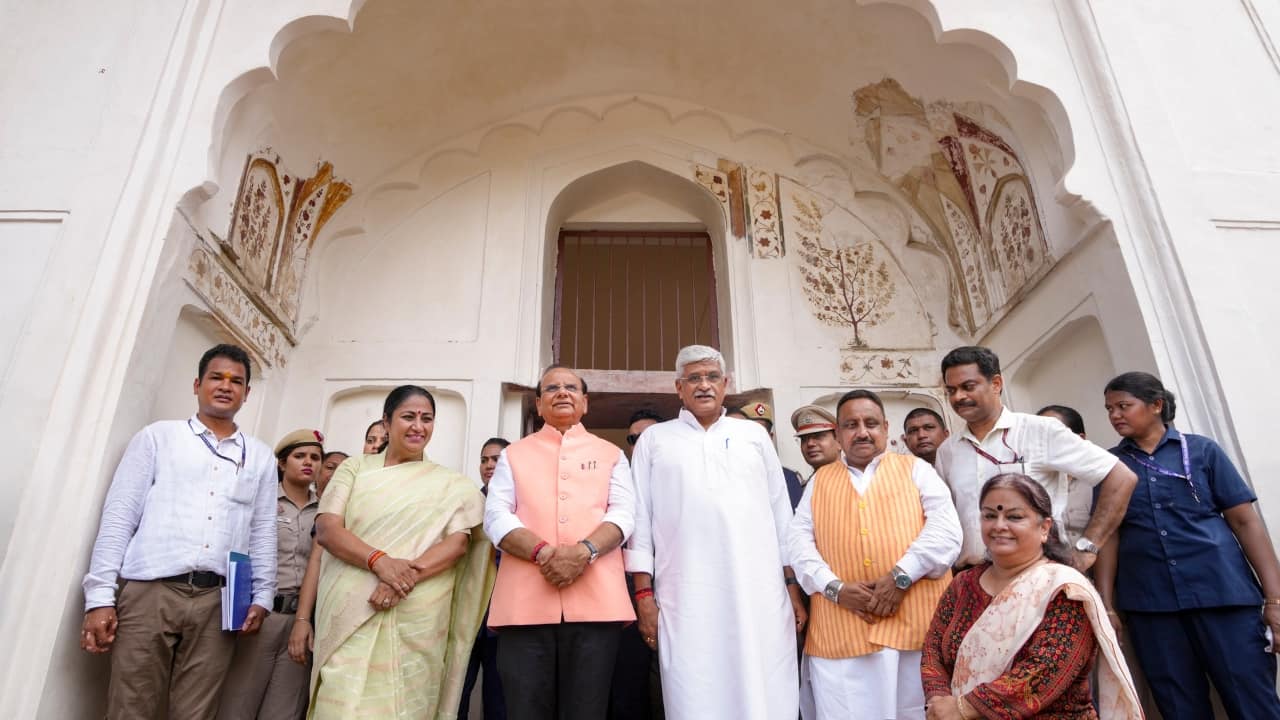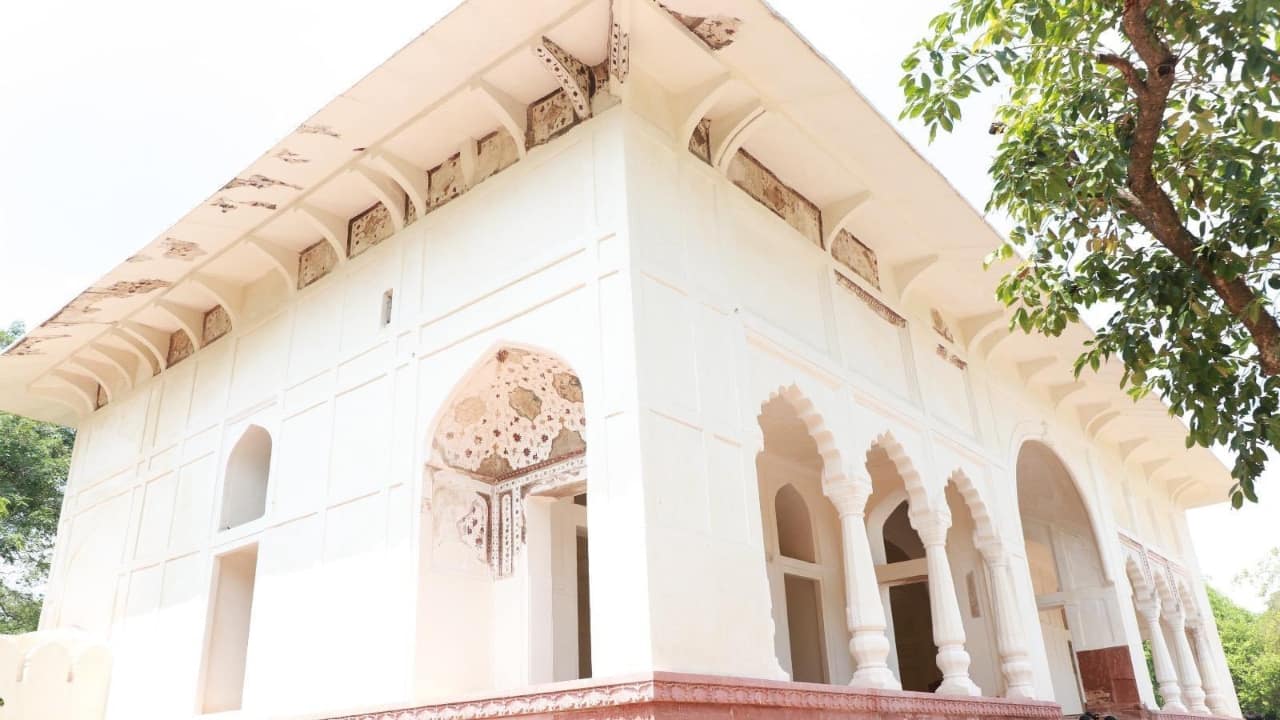After 370 years, Delhi’s restored Mughal-era Sheesh Mahal opens to the public
After 370 years, Delhi’s Mughal-era Sheesh Mahal reopens in Shalimar Bagh. Explore the meticulously restored pavilion and its role in Delhi’s imperial past.
1/10

In a quiet corner of North Delhi, far from the hurried tourist circuits of the city, a delicate piece of history has stirred back to life. The Sheesh Mahal, an understated yet evocative 17th-century Mughal pavilion, reopened to the public on July 2, 2025, following a layered and exacting restoration. (Image: X/@LtGovDelhi)
2/10

The 17th-century Mughal-era pavilion in Delhi’s Shalimar Bagh, where Aurangzeb is said to have been crowned, was reopened on a Wednesday morning by Chief Minister Rekha Gupta, joined by Culture and Tourism Minister Gajendra Singh Shekhawat, Lieutenant Governor Vinai Kumar Saxena, and Member of Parliament Praveen Khandelwal—a moment that marked not just the revival of a monument, but the return of a chapter in Delhi’s imperial story. (Image: PTI)
3/10

Originally built in 1653 by Izz-un-Nissa Begum, consort to Emperor Shah Jahan, the Sheesh Mahal was once a royal sanctuary—part of a sprawling garden estate designed to mirror the splendour of Kashmir’s famed Shalimar Bagh. While time rendered it nearly invisible beneath encroachment and apathy, the palace now stands resurrected, thanks to a collaborative conservation effort led by the Archaeological Survey of India (ASI) and the Delhi Development Authority (DDA). (Image: X/@LtGovDelhi)
4/10

Crafting Restoration, Not Replication
What distinguishes this restoration is its devotion to authenticity. The ASI avoided modern shortcuts in favour of historic construction materials—Lakhauri bricks, lime surkhi, and organic binding agents made from jaggery, bael fruit, and urad dal paste—all time-tested elements once favoured by Mughal craftsmen. The result is not a replica, but a resurrection. (Image: X/@LtGovDelhi)
What distinguishes this restoration is its devotion to authenticity. The ASI avoided modern shortcuts in favour of historic construction materials—Lakhauri bricks, lime surkhi, and organic binding agents made from jaggery, bael fruit, and urad dal paste—all time-tested elements once favoured by Mughal craftsmen. The result is not a replica, but a resurrection. (Image: X/@LtGovDelhi)
5/10

The DDA, meanwhile, turned its attention to the gardens, reviving the original charbagh layout, the signature four-part division that once defined Persian and Mughal horticulture. Paths were redrawn, water channels cleared, and heritage trees preserved to restore the garden's contemplative symmetry. (Image: X/@LtGovDelhi)
6/10

A Space Once Royal, Still Resonant
Although not as imposing as other Mughal edifices, Sheesh Mahal’s quiet dignity carries its own kind of authority. Its scalloped arches, faded mirror work, and floral stucco reliefs whisper of an age that prized subtlety over spectacle. Scholars believe it may have served as a retreat for Shah Jahan during military expeditions, and possibly even the site where Aurangzeb received his imperial crown after deposing his father. (Image: X/@LtGovDelhi)
Although not as imposing as other Mughal edifices, Sheesh Mahal’s quiet dignity carries its own kind of authority. Its scalloped arches, faded mirror work, and floral stucco reliefs whisper of an age that prized subtlety over spectacle. Scholars believe it may have served as a retreat for Shah Jahan during military expeditions, and possibly even the site where Aurangzeb received his imperial crown after deposing his father. (Image: X/@LtGovDelhi)
7/10

Just adjacent lies a red sandstone hamam, now stabilised but not embellished—another gesture of respect for historical restraint. The surrounding complex, including a weathered baradari and three restored heritage cottages, completes the picture of a site that once bustled with royal leisure. Two of these cottages now house Café Shalimar and a Readers’ Corner, blending heritage with present-day community use in a manner that feels both appropriate and considered. (Image: X/@official_dda)
8/10

Shalimar Bagh: Echoes of a Lost Garden
Once a jewel of Mughal garden design, Shalimar Bagh has endured centuries of erasure. During the colonial era, it served as a summer refuge for British officers; more recently, it has simply existed—used but largely forgotten. That the Sheesh Mahal now stands open once again is also a call to reconsider the broader heritage of the area. Today, the park is gently lived-in. Elderly residents gather for evening walks and yoga. Children run through the lawns. Women sit quietly beneath neem trees. It is not the grand garden it once was, but it breathes still—and now, it remembers. (Image: X/@LtGovDelhi)
Once a jewel of Mughal garden design, Shalimar Bagh has endured centuries of erasure. During the colonial era, it served as a summer refuge for British officers; more recently, it has simply existed—used but largely forgotten. That the Sheesh Mahal now stands open once again is also a call to reconsider the broader heritage of the area. Today, the park is gently lived-in. Elderly residents gather for evening walks and yoga. Children run through the lawns. Women sit quietly beneath neem trees. It is not the grand garden it once was, but it breathes still—and now, it remembers. (Image: X/@LtGovDelhi)
9/10

Beyond the Monument: A Heritage Circuit in the Making
There is renewed interest in connecting Sheesh Mahal to a wider heritage trail in North Delhi—one that might include Coronation Park, the Mutiny Memorial, and lesser-known Ashokan-era relics. In doing so, the restoration serves a purpose larger than itself. It invites visitors to explore not just Delhi’s well-trodden southern quarters but its northern narrative, often overlooked but no less significant. (Image: X/@LtGovDelhi)
There is renewed interest in connecting Sheesh Mahal to a wider heritage trail in North Delhi—one that might include Coronation Park, the Mutiny Memorial, and lesser-known Ashokan-era relics. In doing so, the restoration serves a purpose larger than itself. It invites visitors to explore not just Delhi’s well-trodden southern quarters but its northern narrative, often overlooked but no less significant. (Image: X/@LtGovDelhi)
10/10

Why the Sheesh Mahal Matters
This restoration is neither a tourist gimmick nor a museum piece. It is an act of quiet reclamation. For travellers drawn to stories beneath the surface—for those who look for resonance rather than recreation—the Sheesh Mahal in Shalimar Bagh is a worthy stop. Not for grandeur, but for memory. Not for spectacle, but for substance. (Image: X/@LtGovDelhi) (With inputs from agencies)
This restoration is neither a tourist gimmick nor a museum piece. It is an act of quiet reclamation. For travellers drawn to stories beneath the surface—for those who look for resonance rather than recreation—the Sheesh Mahal in Shalimar Bagh is a worthy stop. Not for grandeur, but for memory. Not for spectacle, but for substance. (Image: X/@LtGovDelhi) (With inputs from agencies)
Discover the latest Business News, Budget 2025 News, Sensex, and Nifty updates. Obtain Personal Finance insights, tax queries, and expert opinions on Moneycontrol or download the Moneycontrol App to stay updated!






